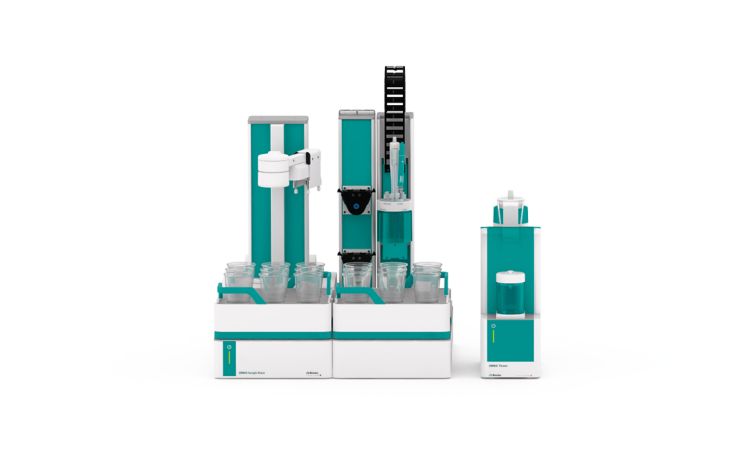Corrosion of metallic components is an inherent problem for engines, because metals naturally tend to oxidize in the presence of water and/or low pH value. The reserve alkalinity of engine coolants and antirusts is a measure of the buffering ability to absorb acidity. Such acids might by introduced by exhaust gas leakage, by residual acid cleaner, or by the oxidation of ethylene glycol or propylene glycol. The reserve alkalinity is frequently used for quality control during production and often listed in the specifications of the coolants. A fast and accurate determination is therefore important.
This Application Note describes the straightforward determination of reserve alkalinity according to ASTM D1121. Engine coolants or antirusts are dissolved in water. After a pH measurement, the determination is carried out by potentiometric titration.
Using a fully automated system allows an accurate and reliable determination due to the reduction of human errors. Furthermore, the operator is free to carry out other tasks increasing the efficiency of the laboratory.
The method is demonstrated on engine coolant. No sample preparation is necessary.

The analysis is performed on an OMNIS system consisting of an OMNIS Sample Robot S and an OMNIS Advanced Titrator equipped with a Profitrode.
The Profitrode has to be calibrated before use.
Engine coolant is pipetted into the sample beaker. While stirring, deionized water is added using the integrated pumps. The pH value is measured until a stable drift is reached, then the solution is titrated with standardized hydrochloric acid to the endpoint at pH 5.5.
Afterwards, the solution is aspirated and the buret tips as well as the electrode are rinsed with deionized water. The glass membrane of the electrode alone is then conditioned for 2 minutes in deionized water.
The obtained results lay within the limits given by ASTM D1121 and are therefore acceptable. An example titration curve can be seen in Figure 2 and the results are summarized in Table 1.
| Mean | SD(abs) | SD(rel) / % | |
|---|---|---|---|
| Initial pH | 8.94 | 0.02 | 0.2 |
| Reserve alkalinity / mL | 46.56 | 0.12 | 0.3 |
The reserve alkalinity can precisely be determined according to ASTM D1121 by using the Profitrode for indication and a reliable titration system from Metrohm. By choosing an automated OMNIS system, the accuracy can be enhanced and the throughput maximized by the determination of samples in parallel.
Internal reference: AW TI CH1-1251-112018
 Share via email
Share via email
 Download PDF
Download PDF